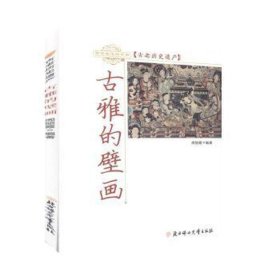
口译质量评估:功能语言学新途径(英文版)
本店经营正版新书 两天左右发货 有着急发货的请不要下单
¥ 12.76 3.0折 ¥ 42 全新
库存60件
北京朝阳
认证卖家担保交易快速发货售后保障
作者欧阳倩华 著;萧国政 编
出版社世界图书出版公司
出版时间2015-09
版次1
装帧平装
上书时间2024-12-26
- 在售商品 暂无
- 平均发货时间 31小时
- 好评率 暂无
- 最新上架
商品详情
- 品相描述:全新
图书标准信息
- 作者 欧阳倩华 著;萧国政 编
- 出版社 世界图书出版公司
- 出版时间 2015-09
- 版次 1
- ISBN 9787519201807
- 定价 42.00元
- 装帧 平装
- 开本 16开
- 纸张 胶版纸
- 页数 198页
- 字数 260千字
- 正文语种 英语
- 丛书 外文博士论文库系列;语言学研究新视界文库
- 【内容简介】
- 《口译质量评估:功能语言学新途径(英文版)》以系统功能语法对语言意义的分析为基本框架,与口译用户期待研究所总结的主要评估标准相结合,从准确性、恰当性和连贯性三个方面建构一个口译意义传递质量评估模型,并将所建模型应用于评估学生的英汉交替传译语料,以验证其适用性,并具体展示模型的使用步骤。
- 【作者简介】
- 欧阳倩华,祖籍湖南,曾先后在广东外语外贸大学、澳门大学攻读学位,获文学学士、文学硕士及哲学博士学位。为国际翻译与跨文化研究协会(IATIS)会员、中国翻译协会会员、澳门翻译员联合会创会会员、广州翻译协会理事、广东外语外贸大学翻译学院口译系讲师、广外翻译学研究中心兼职研究员。主要研究方向为口译教学,口译质量评估及口译中的语篇分析。曾先后发表多篇论文,参与三部口译教材和口译词典的编写,目前主持两项口译研究相关科研项目。拥有多年国际会议传译经验,参加过数百场国际会议的交替传译和同声传译工作,服务对象包括政府部门、大型企业、使领馆、学术机构等。
- 【目录】
-
Chapter 1 Introduction
1.1 Disciplinary background of the book
1.2 Challenges facing interpreting quality assessment and a possible solution
1.3 Research goals of the book
1.4 Research methods of the book
1.5 Organization of the book
Chapter 2 Defining consecutive interpreting in the context of interpreting teaching
2.1 Defining consecutive interpreting
2.2 The transfer of meaning in CI
2.3 Teaching consecutive interpreting
Chapter 3 Language meaning in interpreting: through the eyes of Systemic Functional Linguistics
3.1 SFL: an introduction
3.2 Language meaning: three metafunctions
3.3 SFL and translation quality assessment
Chapter 4 Interpreting quality assessment literature
4.1 Empirical studies on IQA
4.2 Common Criteria in interpreting assessment
4.3 Interpreting quality assessment models for the training purpose
4.4 Summary
Chapter 5 Status quo of IQA in the training setting
5.1 IQA from the eyes of students: the survey
5.2 IQA from the eyes of trainers: the interview
5.3 Summary
Chapter 6 Setting up the model
6.1 The issue of validity and reliability
6.2 Overview of the model
6.3 Implementation of the model
6.4 Pilot application of the model
6.5 Summary
Chapter 7 SFL based quality assessment of students'interpretation
7.1 Data collection and corpus building
7.2 Assessing C-E interpreting
7.3 Assessing E-C interpreting
7.4 Summary
Chapter 8 SFL based assessment and interpreting teaching
8.1 Use the assessment results in interpreting teaching
8.2 Notes on model application
8.3 Summary
Chapter 9 Conclusion
Appendix I Transcription of source speech of C-E Interpreting
Appendix Ⅱ Transcription of source speech of E-C Interpreting
Appendix Ⅲ Lexicogrammatical analysis of the C-E ST
Appendix Ⅳ Lexicogrammatical analysis of the E-C ST
References
Postscript
点击展开
点击收起
相关推荐
— 没有更多了 —













以下为对购买帮助不大的评价